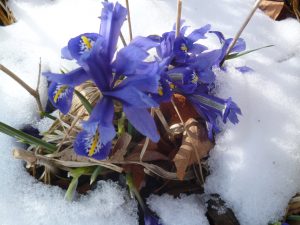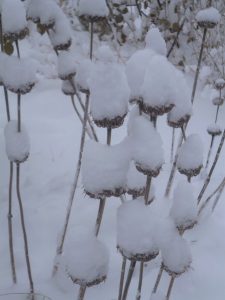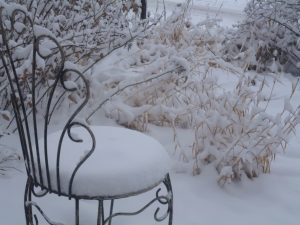 We’re celebrating all month, and we’d love to encourage you to support pollinators in your gardens.
We’re celebrating all month, and we’d love to encourage you to support pollinators in your gardens.
Pollinator Month is a special time for Harlequin’s Gardens – a time when we celebrate the hard work of bees (honeybees, solitary bees, bumblebees) wasps, ants, flies and bee flies, butterflies and moths, beetles, some bats and birds, and some mammals. They’re all around us, connecting the dots between flowers and food.
Come check out our special pollinator display, which is our whole facility! The descriptive signage for most of our plants is marked with bee, hummingbird, and butterfly icons.[Read More]

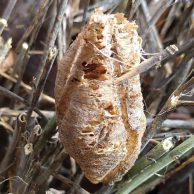
 Give yourself a break by putting away your lawn mower for the month of May with the additional benefit of feeding our early bees!
Give yourself a break by putting away your lawn mower for the month of May with the additional benefit of feeding our early bees!
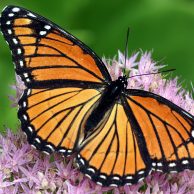 Monarch butterflies previously considered Threatened, have now been classified as Endangered by the International Union for Conservation of Nature, the world’s most comprehensive scientific authority on the status of species. Two major driving factors are habitat loss (and thus, food loss), and climate change.
Monarch butterflies previously considered Threatened, have now been classified as Endangered by the International Union for Conservation of Nature, the world’s most comprehensive scientific authority on the status of species. Two major driving factors are habitat loss (and thus, food loss), and climate change. 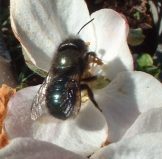 Mason Bee populations plummeted throughout Boulder County due to harsh spring weather, so it’s especially important to coddle them this winter! Mason bees normally nest in holes in tree trunks, which offer stable temperature, moisture, and protection from predators. To provide extra assistance, bring your Mason and other native bee tubes/cocoons into a sheltered place with ambient (outdoor) temperatures, but with less fluctuation, like a garage or refrigerator. Cocooned bees are now adult and safe to handle in their cocoons. If you used liners or reeds, take them out of the guard tubes and shelters and store them in the fridge. Ideally, unwrap the liners/reeds and just overwinter the mason bee cocoons. Place them in a Humidi-bee chamber (in stock), and keep the lower pad moist.
Mason Bee populations plummeted throughout Boulder County due to harsh spring weather, so it’s especially important to coddle them this winter! Mason bees normally nest in holes in tree trunks, which offer stable temperature, moisture, and protection from predators. To provide extra assistance, bring your Mason and other native bee tubes/cocoons into a sheltered place with ambient (outdoor) temperatures, but with less fluctuation, like a garage or refrigerator. Cocooned bees are now adult and safe to handle in their cocoons. If you used liners or reeds, take them out of the guard tubes and shelters and store them in the fridge. Ideally, unwrap the liners/reeds and just overwinter the mason bee cocoons. Place them in a Humidi-bee chamber (in stock), and keep the lower pad moist. 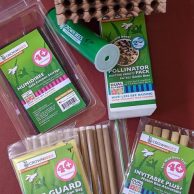
 Our
Our 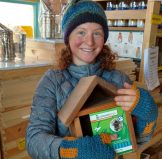 If you were lucky enough to get any mason bees nesting this spring, you’ll want to coddle them through the winter. Their populations are down throughout Boulder County because of the weather, and Tom Theobald, our usual supplier, isn’t even sure whether he’ll have any for sale next spring.
If you were lucky enough to get any mason bees nesting this spring, you’ll want to coddle them through the winter. Their populations are down throughout Boulder County because of the weather, and Tom Theobald, our usual supplier, isn’t even sure whether he’ll have any for sale next spring.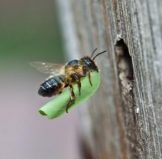 You can do the same with leaf cutter bees but handle them very carefully as they aren’t yet mature. Our supplier, Crown Bees, will be
You can do the same with leaf cutter bees but handle them very carefully as they aren’t yet mature. Our supplier, Crown Bees, will be 

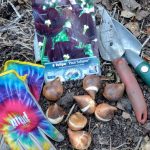



 It’s the time of year to ready our gardens for the upcoming fallow winter season and prepare for next year’s growth. We do this knowing that regeneration will be occurring in our soil, with the microbes and with overwintering insects. Here are tips for you to best help this process take place, while still having an aesthetically pleasing garden.
It’s the time of year to ready our gardens for the upcoming fallow winter season and prepare for next year’s growth. We do this knowing that regeneration will be occurring in our soil, with the microbes and with overwintering insects. Here are tips for you to best help this process take place, while still having an aesthetically pleasing garden. 

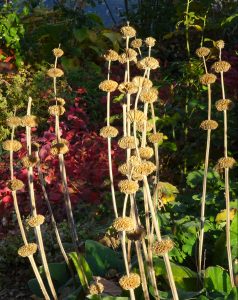
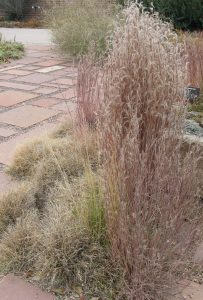 Unless you have an ‘ornamental’ grass that self-sows aggressively, leave grasses and their seedheads standing. If they are ‘cool-season’ grasses, you’ll want to leave them until about mid-February, then cut them to 3” above the ground so they can begin making unimpeded new growth as soon as the soil thaws. Dormant ‘warm-season’ grasses can remain attractive until warm weather comes and don’t need to be cut down until April.
Unless you have an ‘ornamental’ grass that self-sows aggressively, leave grasses and their seedheads standing. If they are ‘cool-season’ grasses, you’ll want to leave them until about mid-February, then cut them to 3” above the ground so they can begin making unimpeded new growth as soon as the soil thaws. Dormant ‘warm-season’ grasses can remain attractive until warm weather comes and don’t need to be cut down until April.